Sparkling Wine From Tasmania: Not Yet Champagne Level, But Very Close
by Ken Gargett
Here in Quill and Pad’s non-horological section, we have looked at a number of great champagnes with more on the horizon. Why not? Champagne is one of the world’s great wines and towers over sparkling competitors (although I have always suspected that the Champenois don’t believe that they have “competitors,” just admirers and imitators).
The world, of course, has a great many other very fine sparklers from other regions of France, Cava, Prosecco, other Italians, the new wave of English wines, the top Californian fizz, Kiwis, Aussies, and more.
In Australia, sparkling wine tends to be divided between the mainland and the island state of Tasmania to the south. On the mainland, regions like the cool-climate Macedon – look for the idiosyncratically fabulous fizz of Hanging Rock – and the Yarra Valley with the iconic Domaine Chandon probably excel above all else.

Jansz Single Vineyard Chardonnay 2014
It is Tasmania, however, that for many of us has staked a claim, not only as offering the very best sparklers from Australia, but second only to those from Champagne. I can almost hear the collective raising of eyebrows, which is more than understandable for several reasons.
Sparkling wine in Tasmania
The sparkling wine industry in Tasmania is in its infancy, perhaps a little more established than that of England but not much. The area of vineyards in production is less than 10 percent of that in Champagne, and while that region has history and experience on its side, Tasmania is a long way from having even identified its finest sparkling vineyards – as one winemaker has said, the best sites are still to be planted.
At the moment, there is nothing to stop a winemaker from making still wines – chardonnay and/or pinot noir – from his vineyards one year and sparkling the next.
Such a small vineyard area means that production figures are tiny. There is only something like 2,000 hectares planted for all varieties in Tasmania. Given that a significant percentage of these will go to the island’s impressive table wines, you can see how small the Tasmanian sparkling wine industry is.
In comparison, the region of Champagne has around 35,000 hectares.
The problem is exacerbated as many of the producers are very small operations – indeed, many have their wines made by contract. And these wines, sparkling or otherwise, often do not make it off the island to the mainland, let alone to export markets offshore.
If the majority of Australians never get to see these wines, who could blame the world for ignorance of them? This is changing, but it will be a slow process.
The wine industry in Tasmania has sputtered along since convict days, and occasionally the candle has gone out. But it really kicked off several decades ago with pioneers like Julian Alcorso and Andrew Pirie.
It was aided by the champagne houses, which were in the process of looking to expand their horizons to regions like Napa and elsewhere. They identified Tasmania very early, and houses like Pol Roger soon had involvement there.
Perhaps most famously, the man who would become Louis Roederer’s superstar chef de cave, Jean-Baptiste Lecaillon, was sent to Heemskerk Estate in 1990 before later taking the reins of the house itself. Heemskerk is located at Piper’s Brook in the Tamar Valley in the north of the island and at the time was 33 percent owned by Roederer (later 50 percent and then later sold).
Although the champagne houses may have largely moved on, local sparkling winemakers quickly realized that this was ground zero for the quality chardonnay and pinot noir they needed. Fruit would be harvested and transported to wineries on the mainland. Before long, operations devoted solely to sparkling wines popped up on the island.
The better Tasmanian sparklers show a balance and an impressive persistence of flavor: vibrant acidity and finely crafted structure with a laser-sharp focus. They age well and exhibit a degree of finesse and class rarely encountered anywhere.
Flavors vary but can include a delightful sea spray note. This pristine island with its cool, often cold, climate provides sparkling wines of a different dimension. The makers are not trying to make champagne – only Champagne can do that – but rather the best that this region is able to offer. And the results are seriously exciting.
There are many we could look at, but two producers have been crucial. Our third contestant is a personal favorite, far better known for its stunning table wines, but it epitomizes the sort of tiny production of quality fizz that is bringing this island to the attention of fizz lovers everywhere, even if it is slow going.
House of Arras
Ed Carr is the heavyweight champion of sparkling wine in Australia and has been for more than two decades. Technically, the chief sparkling winemaker for the Accolade Wine Group, he is the man behind the House of Arras.
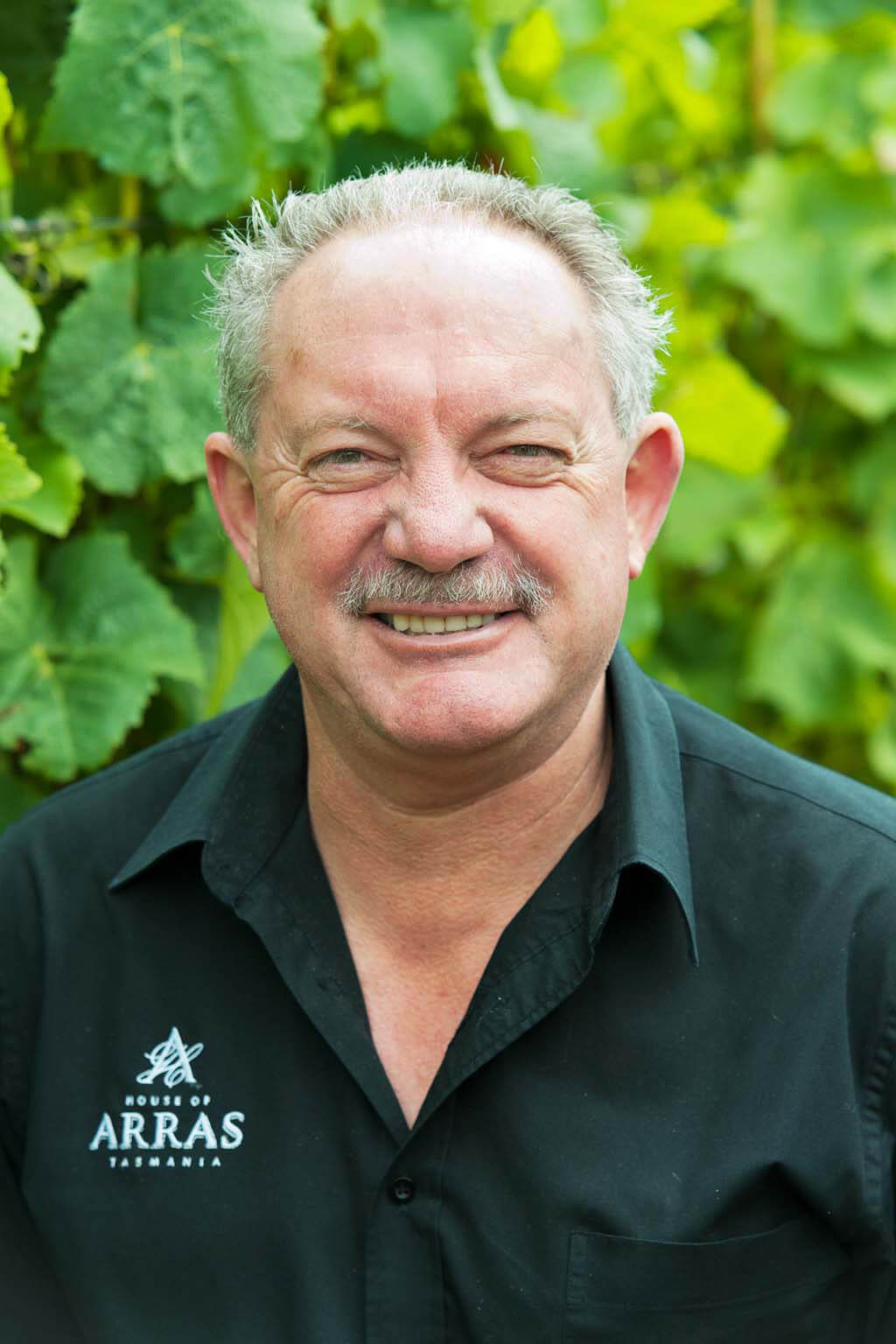
Ed Carr, House of Arras wines, Tasmania
Carr has won every Down Under “winemaker of the year” award imaginable. He has accumulated more than 100 trophies for his fizz, and I’m not sure anyone knows how many gold and other medals as well – well over 200 golds at least.
At one stage, he picked up 21 consecutive “Best Sparkling White Wine of Show” trophies on the circuit. His sparklers have won a vast array of gongs at competitions around the globe, often up against some of the finest fizz flowing.
Through it all, the man with more bling than any other Australian winemaker has remained the most humble and modest man you’ll ever meet.
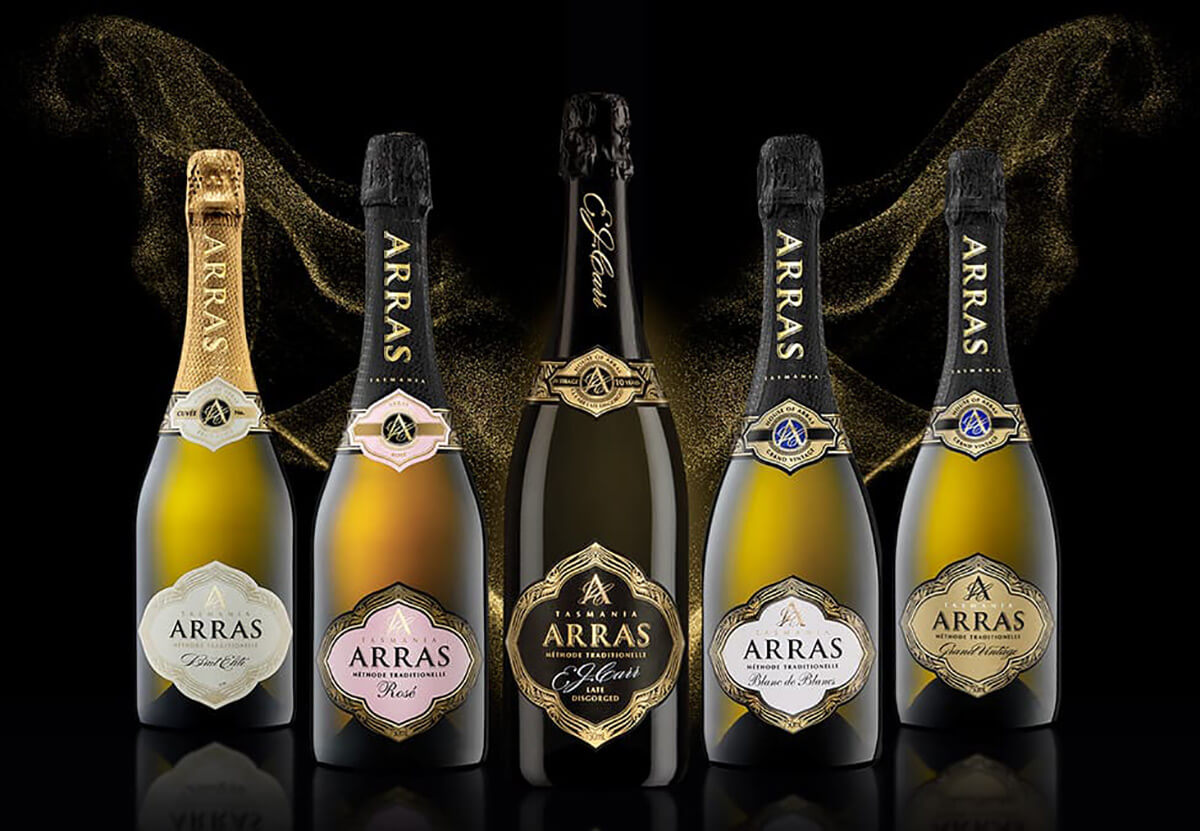
House of Arras wines
The good news is that, following a period when it has seemed as though the powers that be had had no idea how best to utilize Carr and his wines, things seem on track. Production of Arras is likely to be increased and export markets expanded – currently, even though they dwarf most other Tassie sparkling makers with an annual output of around a quarter of a million bottles, almost all are sold in Australia.
Whatever happens, the one concession Carr would not allow would be anything that impacts quality. He is known for having some of his wines on lees for many years and even the non-vintage sees four years.
That equates to many top champagnes as does seven years for vintage wines. Arras works on a basis of around half the needs from the company’s own vineyards and the other half from long-term contracts with trusted growers (who receive appropriate bonuses).
The 1998 Arras was the first to be 100 percent Tasmanian fruit.
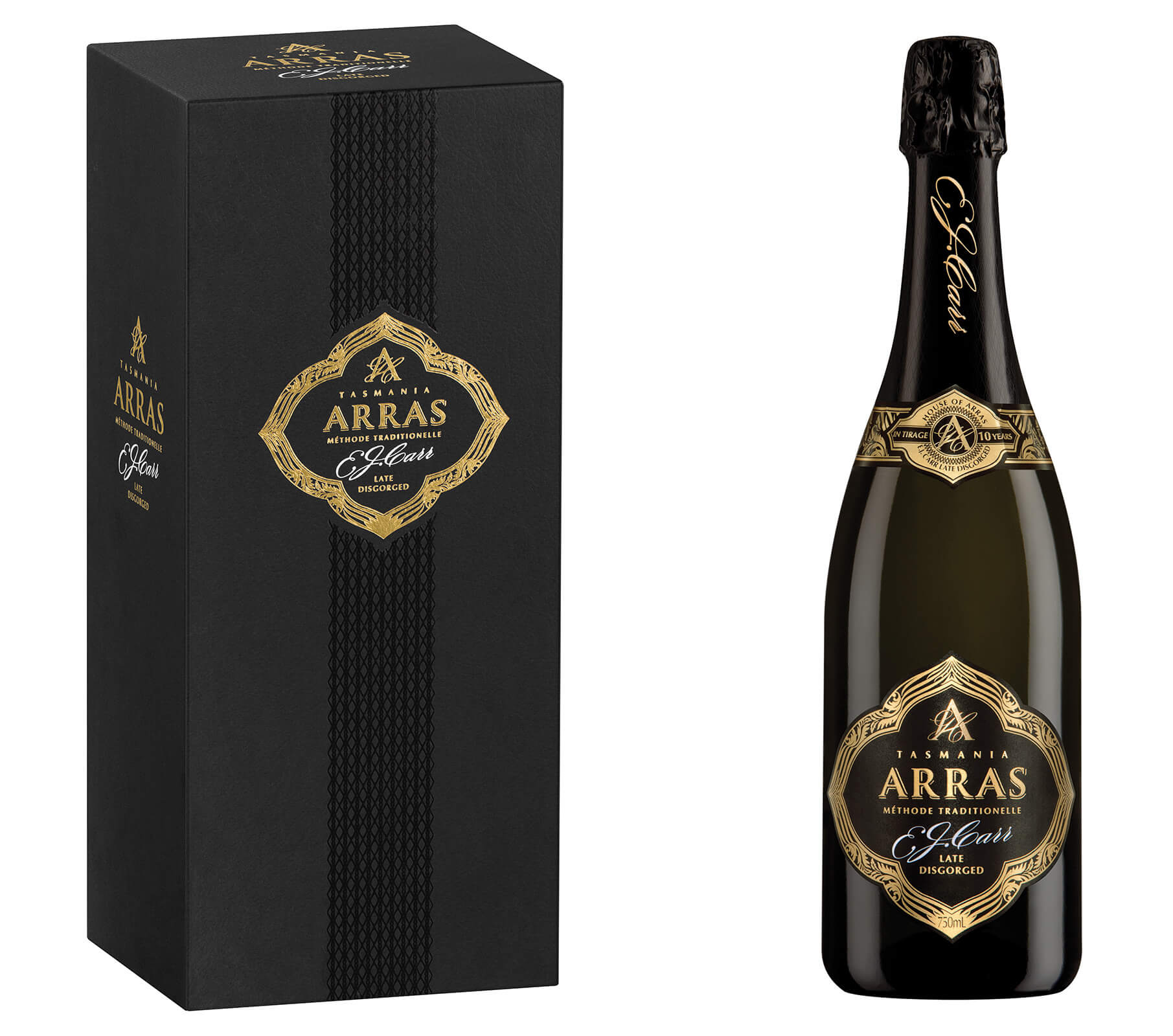
House of Arras EJ Carr Late Disgorged sparking wine from Tasmania
If one had to choose a single wine made by Carr, I’d go with the amazing Late Disgorged efforts. They are expensive – the EJ Carr Late Disgorged 2004 comes in around the AUD$150 mark, so is well in top champagne territory – but surely these wines should be judged on quality and not origin.
This blend of chardonnay and pinot noir (two-thirds and one-third) has spent around 14 years on lees, ensuring extraordinary complexity. Despite the age, there is still a hint of the trademark oyster shell note. Hints of jasmine and almond. Dosage is a low four grams. Approach this without any preconceptions and you will surely be delighted. And impressed. 97.
Pump up the Jansz
Another elite producer with both a history and significant production (everything is relevant) is Jansz, which is part of the Hill-Smith empire (think Yalumba, etc).
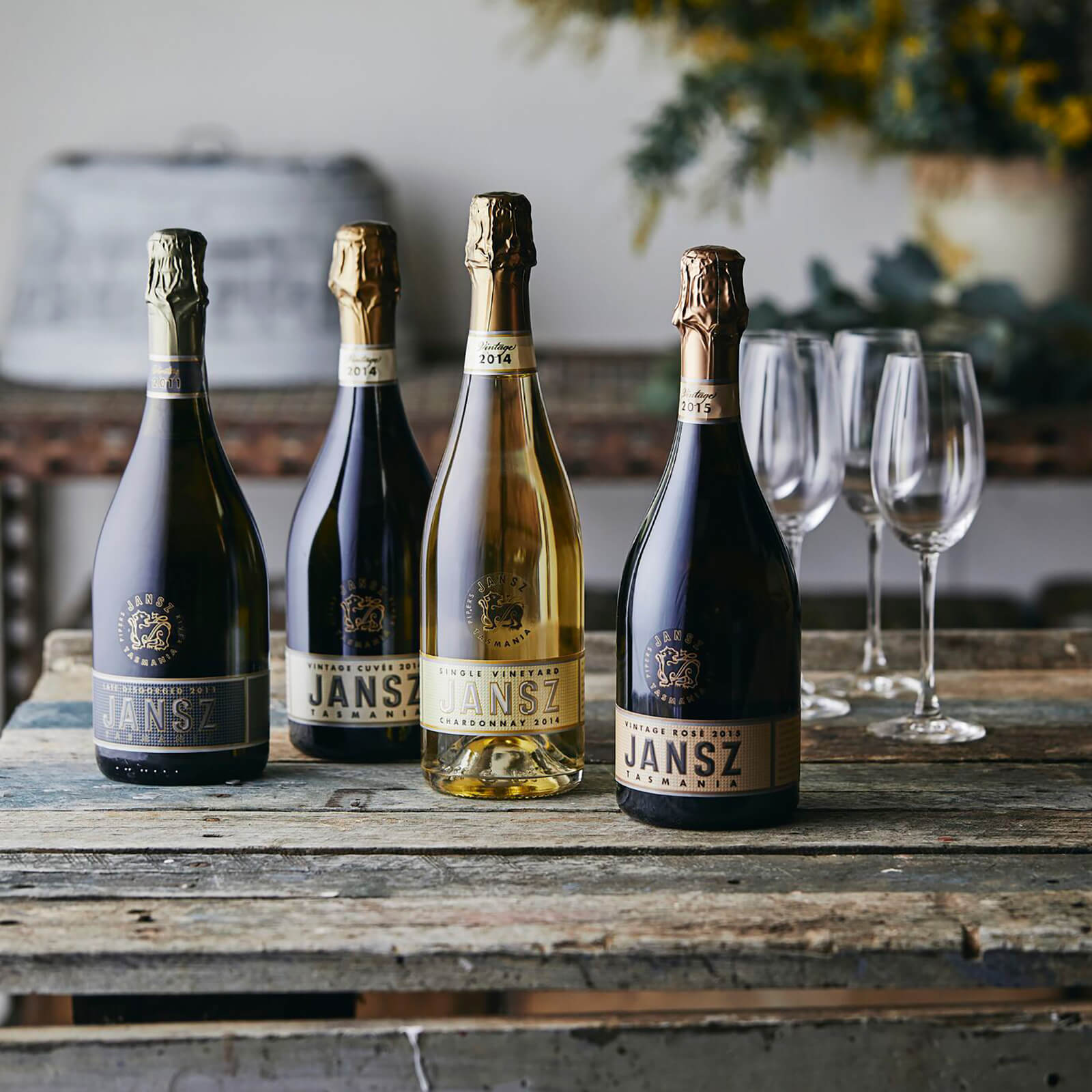
Jansz sparkling wines from Tasmania
They took over the original vineyards used by Heemskerk (Louis Roederer) and have ridden on the talents of local winemaker Natalie Fryar to a position as one of this country’s most respected sparkling producers.
Fryar has moved on, but her wines will filter through the system for some time yet, and you can be certain that the new team under the massively talented chief winemaker at Yalumba, Louisa Rose, will, at the very least, maintain standards.
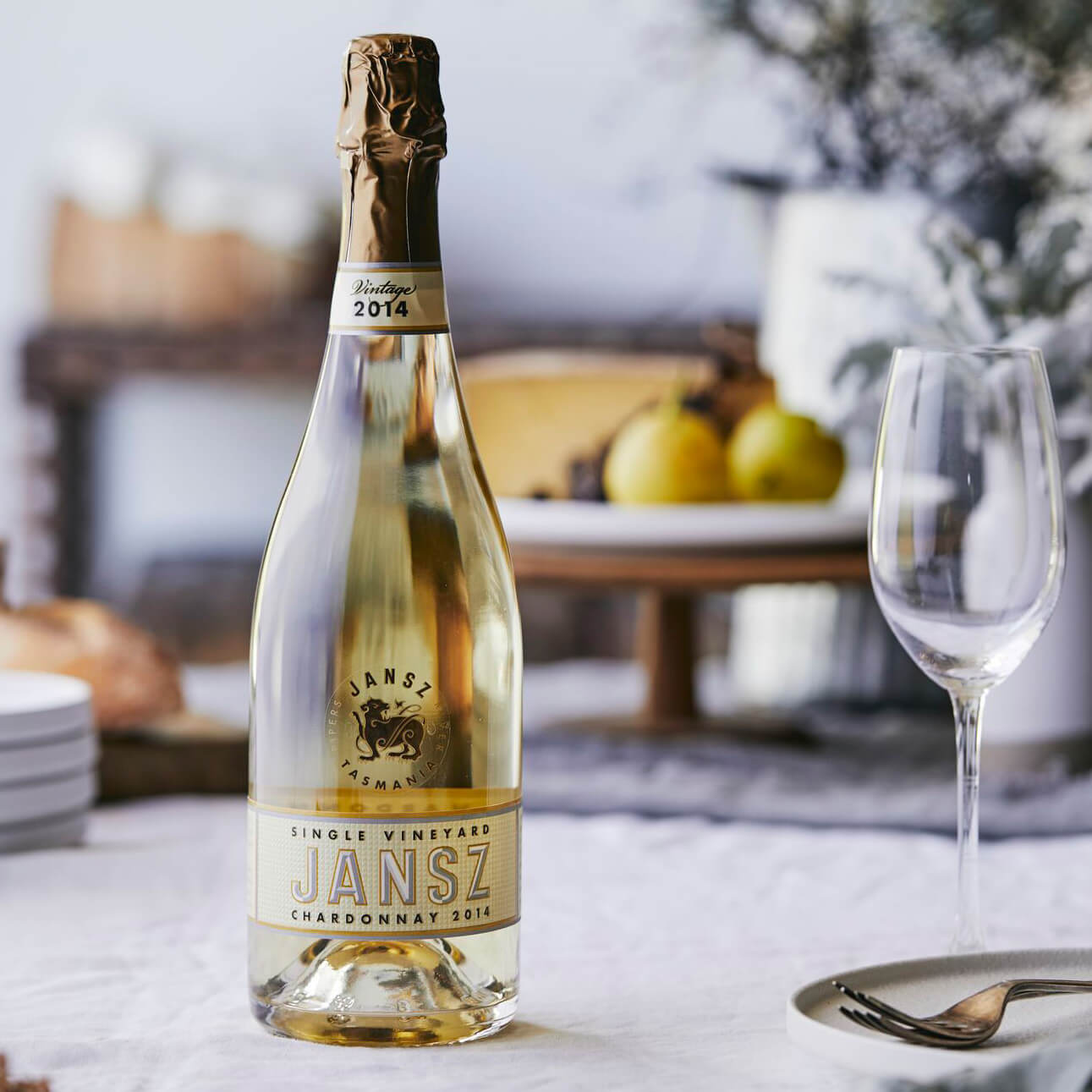
Jansz Single Vineyard Chardonnay 2014
Jansz has adopted the rather neat slogan “Méthode Tasmanoise.” Among the wines it offers are single vineyard sparklings, which are a bit special. While they also offer late disgorged styles (plus rosés, non-vintages, vintages. and so forth), the Single Vineyard Chardonnay 2014 is worth chasing. Only 2,772 bottles made, but at AUD$65, it is seriously good value.
Those delicious blanc des blancs notes of brioche, glacé lemon, stone fruit and florals are ever present. Bright acidity, finesse, and impressive length. A superb sparkler. 96.
Freycinet: a personal favorite
Finally, a personal favorite: the small East Coast winery Freycinet is better known for stunning pinot noir and chardonnay (and amazingly long-lived Riesling), but it has a small side project to make a sparkler.
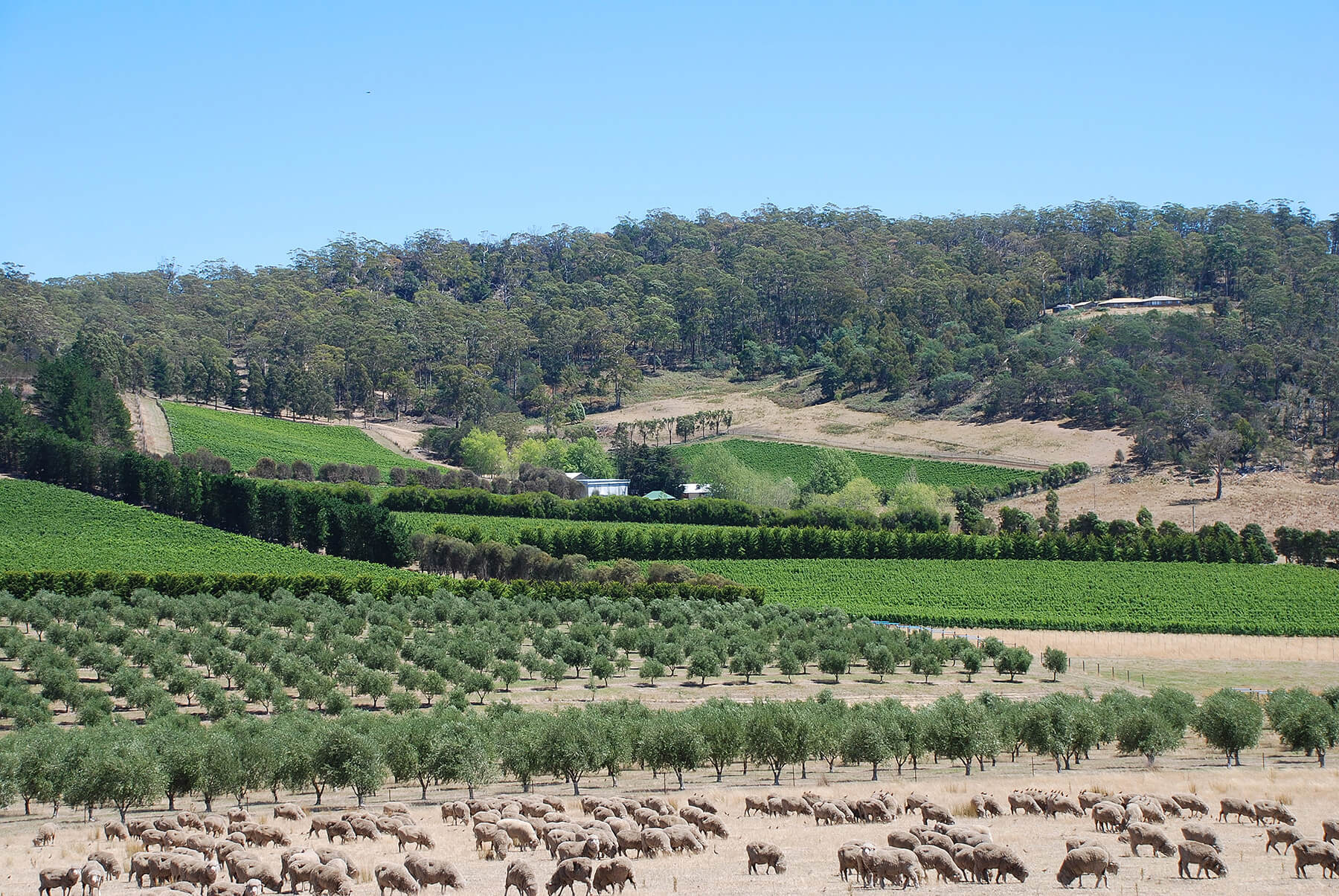
Freycinet vineyard, Tasmania
Called Radenti, after winemaker Claudio Radenti, it was first made back in 1993, but Claudio is never in any hurry with this wine and some releases have spent a decade or more on lees.
The current release is called R3 and it follows the very successful 2011, only this time it is a non-vintage blend (hence R3). Three previous vintage wines were combined: 40 percent of the 2012, 44 percent of the 2013, and 16 percent of the 2016 in a new blend that is 70 percent chardonnay and 30 percent pinot noir.

Freycinet Radenti sparkling wine from Tasmania
It has not seen quite the length of time on lees as some of its predecessors, but that has not seen any diminution of complexity. At AUD$55 it is ridiculous value, but at this stage your chances of finding any offshore are slim. Try www.freycinetvineyard.com.au.
Spices, almonds, brioche, lemon butter on fresh toast. Imagine that you have just picked up a bunch of fresh flowers and a bag of lemons and apricots at the markets and you walk straight into a newly opened bakery.
The structure is immaculate and the length seriously good. The seductively creamy texture is a real highlight and there is a flick of bitter almonds right at the finish. This is a sparkler of the highest quality. 97.
Other top producers include Kreglinger, Josef Chromy, Pirie, Bream Creek, Bay of Fires, Stefano Lubiana, Henskens (well, so a fellow scribe assures me – I have not been able to source a bottle as yet), and numerous others.
These wines might come from the farthest reaches of the planet, but they are worth chasing. Champagne is undoubtedly the pinnacle when it comes to great sparkling wine, but for me an impressive second place goes to Tasmania.
You may also enjoy:
Top Five Champagne Stories From 5 Years Of Quill & Pad: Cheers And Happy New Year
Penfolds’ New Champagne: The First Australian Genuine French Champagne
Leave a Reply
Want to join the discussion?Feel free to contribute!



Hi,What was the date of your comments please.The house of arras has one huge international awards since .Does not this then require a rewrite of your article. The French have nothing to compare to even the N.V. Arras or Janze on price or quality.I believe you are locked into the “It’s French it has to be better “mentality.Mon Dieu wake up Tasmanian sparkling is the best value for money Sparkling wine on the planet .Regards and cheers Darryl Johnston Hurstbridge Victoria Australia.